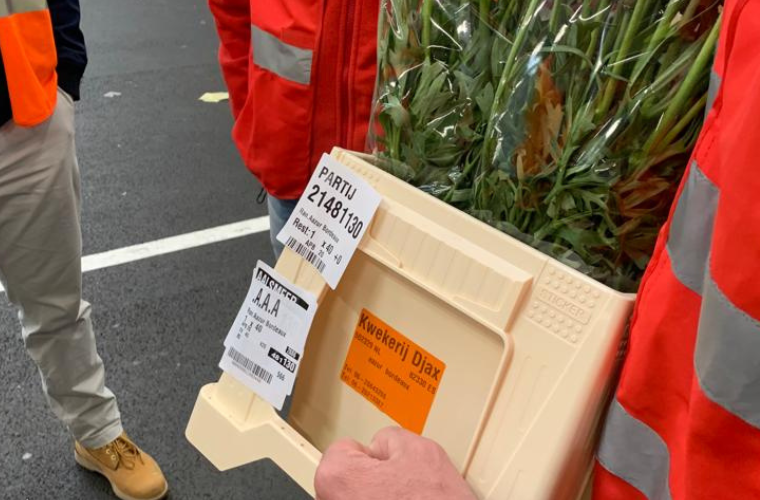In the floriculture chain, placing stickers on orders is essential to the processing of the products further in the chain. Many different types of stickers are used for this. ‘Not ideal’ according to many growers. That is why at Floriday, we are looking into introducing a single ‘sector sticker’ which growers, buyers and their customers can use to organise processes more efficiently. Which possibilities does this provide for growers and buyers? We spoke about this with Danny van Bergen-Henegouwen, Purchasing Director of FM Group.
The flower branch of FM Group purchases around 13,000 trade items annually from 125 growers with whom they have a long-standing relationship. More than two thirds are purchased directly and one third via the auction. At FM Group, 78% of what comes in leaves the same day, 15% the following day and only 4% the day after. What sets FM Group apart is that they can make large volumes small for their long-standing customers and process them at a rapid pace. At the location in Aalsmeer, approximately 4,000 to 4,500 packaging units are processed per hour. Theoretically speaking, a lorry could be fully loaded every twelve minutes. This happens a few times a year, on public holidays and Mother’s Day. The conveyor belt is 125 metres long and has 25 side lanes with spots for customers (large and small).
Labour-intensive sticker process
The lots that arrive at FM Group often already contain a barcode of the supplier, usually at lot level. FM Group places a sticker – at packaging unit level – over this. The conveyor belt then reads which customer this is for and pushes it out at the right spot, for the right customer. Danny: “In our current process, each packaging unit needs its own unique barcode with a destination. As a result of this, the conveyor belt knows where it has to push out which packaging unit. At present, we check the trolleys that arrive at our company on the basis of a transport receipt. We check the order of the products on the trolley and print stickers that we then place on each packaging unit from the bottom right to top left. This is an essential but also labour-intensive task within our total processing process. If you look at this process and start dreaming about which efficiency improvements are still possible by collaborating more in the chain, then great solutions are possible in the future.”

